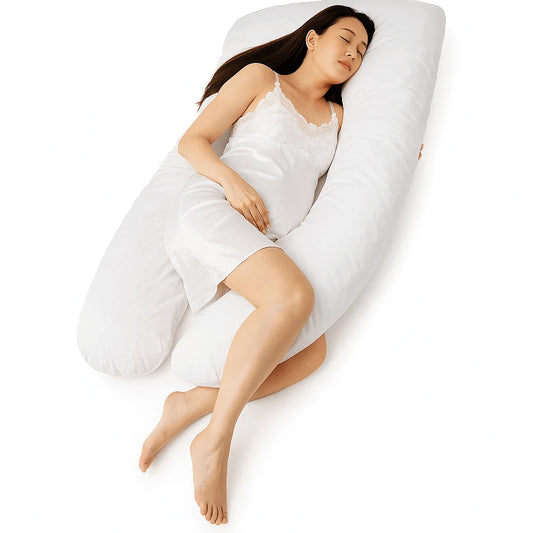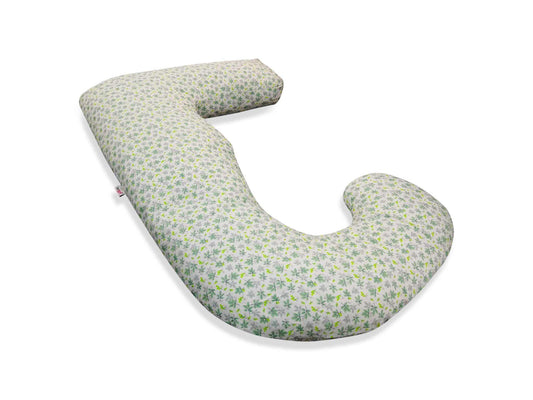The Ultimate Guide to Comfortable Side Sleeping

Protecting Your Neck and Shoulders
Sleep is an essential part of our daily lives, and the position in which we sleep can significantly impact our overall well-being. Side sleeping is one of the most common sleep positions, but it's not without its challenges. Many side sleepers often wake up with neck and shoulder pain, which can be attributed to poor sleeping posture and inadequate support. In this comprehensive guide, we will explore the best ways to sleep on your side while using pillows to protect your shoulders and neck, ensuring a restful night's sleep.
The Side Sleeping Challenge
Side sleeping has several benefits, such as reducing snoring and alleviating symptoms of sleep apnea. However, it can also pose specific challenges, particularly when it comes to maintaining proper posture and avoiding discomfort. Many side sleepers experience neck and shoulder pain because they don't pay enough attention to the way they position their body and pillows while sleeping.
The Importance of Pillow Support
To sleep comfortably on your side and prevent neck and shoulder pain, selecting the right pillows is crucial. Here are some tips on how to choose the best pillows for side sleepers:
The Main Pillow: Your primary pillow should support your head and neck to keep your spine in a neutral alignment. Look for a pillow with medium to firm support to prevent your head from sinking too deeply.
Shoulder Support Pillow: Place a smaller pillow or a specially designed shoulder support pillow between your knees. This helps align your hips and prevents your top knee from falling forward, which can strain your lower back.
Pillow Height: The height of your pillow should be appropriate for your body size and mattress firmness. A thicker pillow may be necessary for a soft mattress, while a thinner one may suffice for a firmer mattress.
Material Matters: Consider the pillow's material. Memory foam pillows are popular among side sleepers because they contour to the shape of your head and neck, providing excellent support.
Now that you've selected the right pillows let's dive into the best way to sleep on your side while protecting your neck and shoulders.
The Ideal Side Sleeping Position
Align Your Spine: Lie on your side with your legs straight and your body in a straight line. Place the main pillow under your head so that it supports your neck and keeps your head level with your spine. Avoid using an overly thick or thin pillow that can cause your neck to bend at an uncomfortable angle.
Shoulders on Pillow: To prevent shoulder pain, make sure your shoulders are aligned with your body. Tuck the pillow under your shoulder so that it supports the weight of your upper arm, allowing your shoulder to rest comfortably without compressing it.
Use a Knee Pillow: Place the smaller pillow or knee pillow between your knees to maintain proper hip alignment. This prevents your top leg from falling forward and straining your lower back. Your knees should be bent at a 90-degree angle.
Pillow Placement: Experiment with the placement of your pillows to find the most comfortable position. You can adjust the angle of your top leg by moving the knee pillow slightly higher or lower, depending on your comfort.
Rotate Sides: It's beneficial to alternate sides during the night to distribute pressure evenly and prevent overuse of one shoulder. Use the same pillow setup on both sides to maintain consistent support.
Common Problems and Solutions
Side Sleeper Neck and Shoulder Pain:
If you wake up with neck or shoulder pain, it's possible that your pillow is not providing adequate support. Consider investing in a higher-quality pillow that suits your specific needs, and ensure your shoulder is properly supported.
Side Sleeper Posture:
Maintaining the right posture while sleeping on your side is essential. Avoid curling into a fetal position, as this can strain your neck and back. Keep your body straight and in line with your spine.
Adjust Pillow Thickness:
If you find that your pillow is too thick or too thin, experiment with different pillow sizes or materials. Your goal should be to keep your head and neck in a neutral position.
Use a Body Pillow for Added Support:
To enhance your side sleeping experience, consider using a body pillow. A body pillow is a long, cylindrical pillow that you can hug or position alongside your body. This extra pillow can provide support to your upper body, preventing you from rolling onto your stomach during the night and helping to maintain proper spinal alignment.
When using a body pillow, position it against your chest and abdomen, allowing you to embrace it comfortably. This can reduce strain on your shoulder and neck muscles while providing additional support to your upper body.
By incorporating a body pillow into your side sleeping routine, you can further enhance your sleeping posture and minimize the risk of waking up with neck and shoulder pain. Experiment with different body pillow sizes and shapes to find the one that complements your preferred sleeping position.
Sleeping on your side can be a comfortable and healthy sleep position when done correctly. By using the right pillows and following the tips mentioned above, you can protect your neck and shoulders from pain and discomfort. Remember to prioritize alignment and support to ensure a restful night's sleep as a side sleeper.
Incorporating these practices into your nightly routine may take some adjustment, but the long-term benefits of waking up pain-free and well-rested are well worth the effort. Sweet dreams!

















